

 MATT LOVELL explains how simple it is to ballast your track
MATT LOVELL explains how simple it is to ballast your track
In a previous article I looked at using the Gaugemaster Ballasted Underlay and the points and crossing kits to lay the track on. In this issue I will be covering a more traditional method of ballasting the track and even adding some extra detail for enhanced realism.
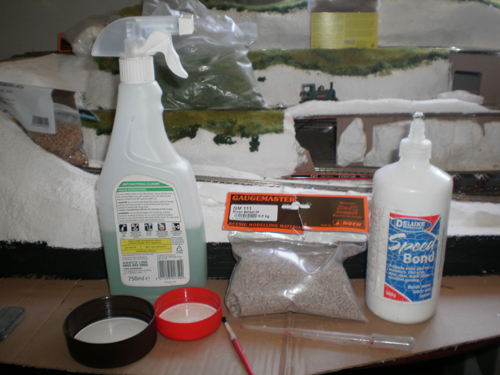
Track ballasting is one of those long (but rewarding) jobs that needs care and time given to it. If it is done too quickly it can end up marring the look of the railway, and once it is laid and glued down it is quite difficult to remove and start again.
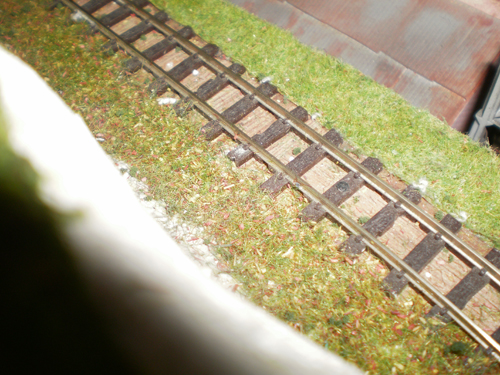
Once you have your track plan in mind you can secure your track to the baseboard using track pins. I personally use the Gaugemaster 15mm Track Pins as they are quite thin, but have a big enough head to hold the sleeper.
Note: Adding a cork track bed will help deaden the sound of the running locomotive and help form the ballast shoulder later on.
Using the Gaugemaster Pin Pusher helps as it is a simple and easy way to get the pins into the board, which save lots of hurt fingers!
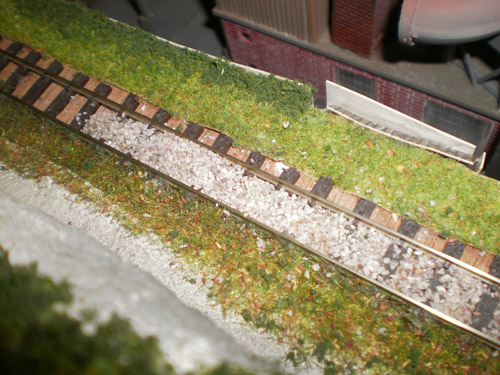
Once you are happy with the laid track, you can now start applying the loose ballast between the rails and around the edges. Remember to work in small sections at a time otherwise you can get in quite a mess.
Using a medium size paint brush, brush the ballast stones into place making sure that no ballast is above the rail height or against the inside of the rails as this will distort the running of the trains.
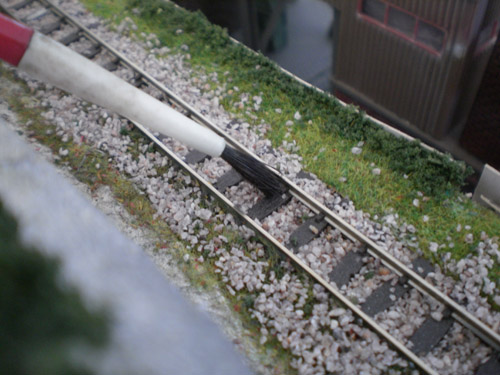
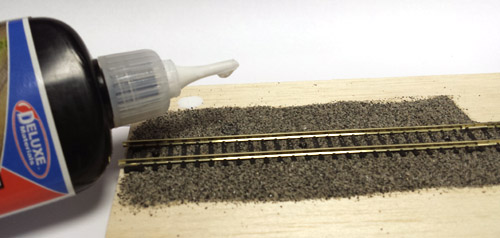
After all the stray ballast has been swept and you are happy with the look, grab a bottle of Deluxe Materials DLAD-75 Ballast Bond and carefully dribble the adhesive onto the ballast. The glue will soak into the ballast so you may need to add a bit more to cover it.
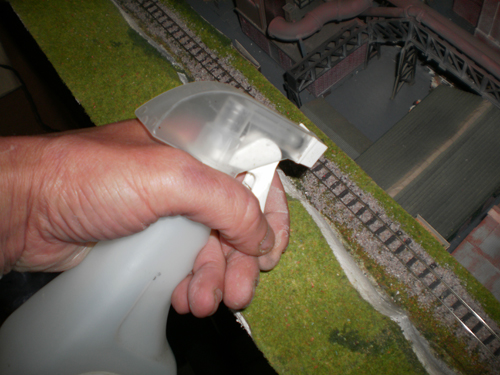
Add a small amount of washing up liquid to some water in a spray bottle. Spray this carefully over the top of the ballast from roughly six inches above the board. Too close and you will start blowing the stones around distorting your previous efforts. This breaks the surface tension and will allow the glue to penetrate between the ballast stones.
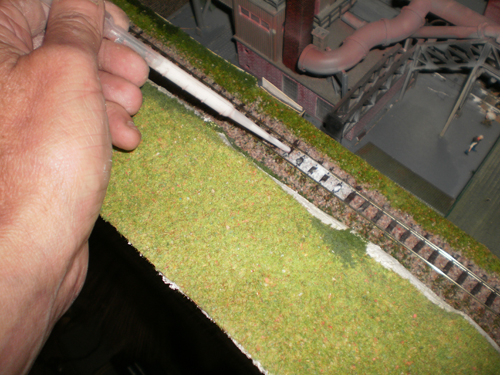
Once the track has been sprayed use a 50:50 mix of Speedbond and water, and using a syringe apply the mixture between the sleepers and on the ballast shoulder.
Leave this to dry for at least twenty-four hours to allow the glue to set rock hard. Remember you can work on multiple sections at a time.
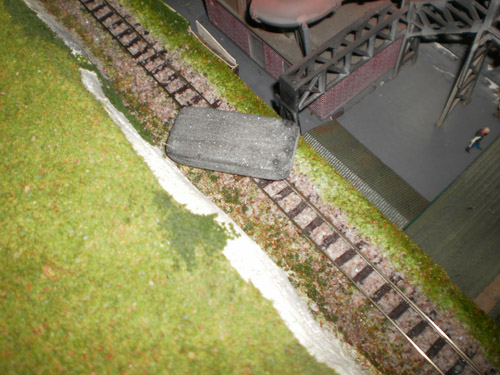
Once the ballast is glued down, run a Track Rubber over the top to remove any stray glue which might be on the top of the rails.
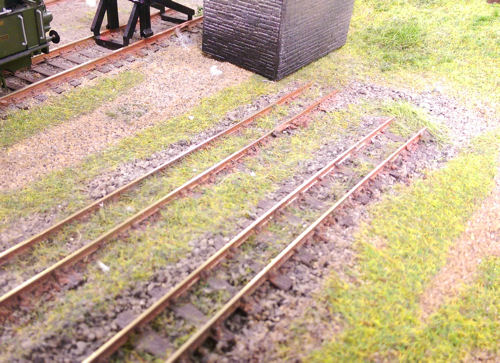
This works nicely for Narrow Gauge sidings or any disused areas on the layout. This process is quite straight forward and looks great once completed.
Simply add some Static Grass to the dry ballast (Step 2) and sprinkle between the rails and over the outside of the sleepers.
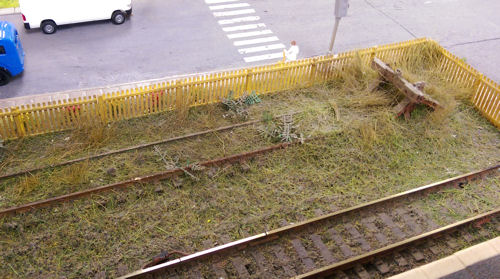
You will now have an overgrown siding which looks like the grass and weeds are protruding through the ballast.
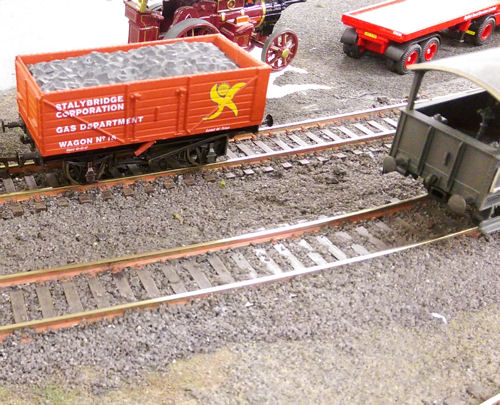
Another small detail which can be used is the addition of darker ballast for areas where locomotives sit or are worked on.
Using N09376 Dark Grey Ballast from Noch you can create a dirty looking area which looks great in any goods yard or railway depot. You can also darken the trackside around Coal Staithes with a mix of Coal and dark grey ballast.
You can read up on more RIGHT LINES articles on ballast and underlay below: